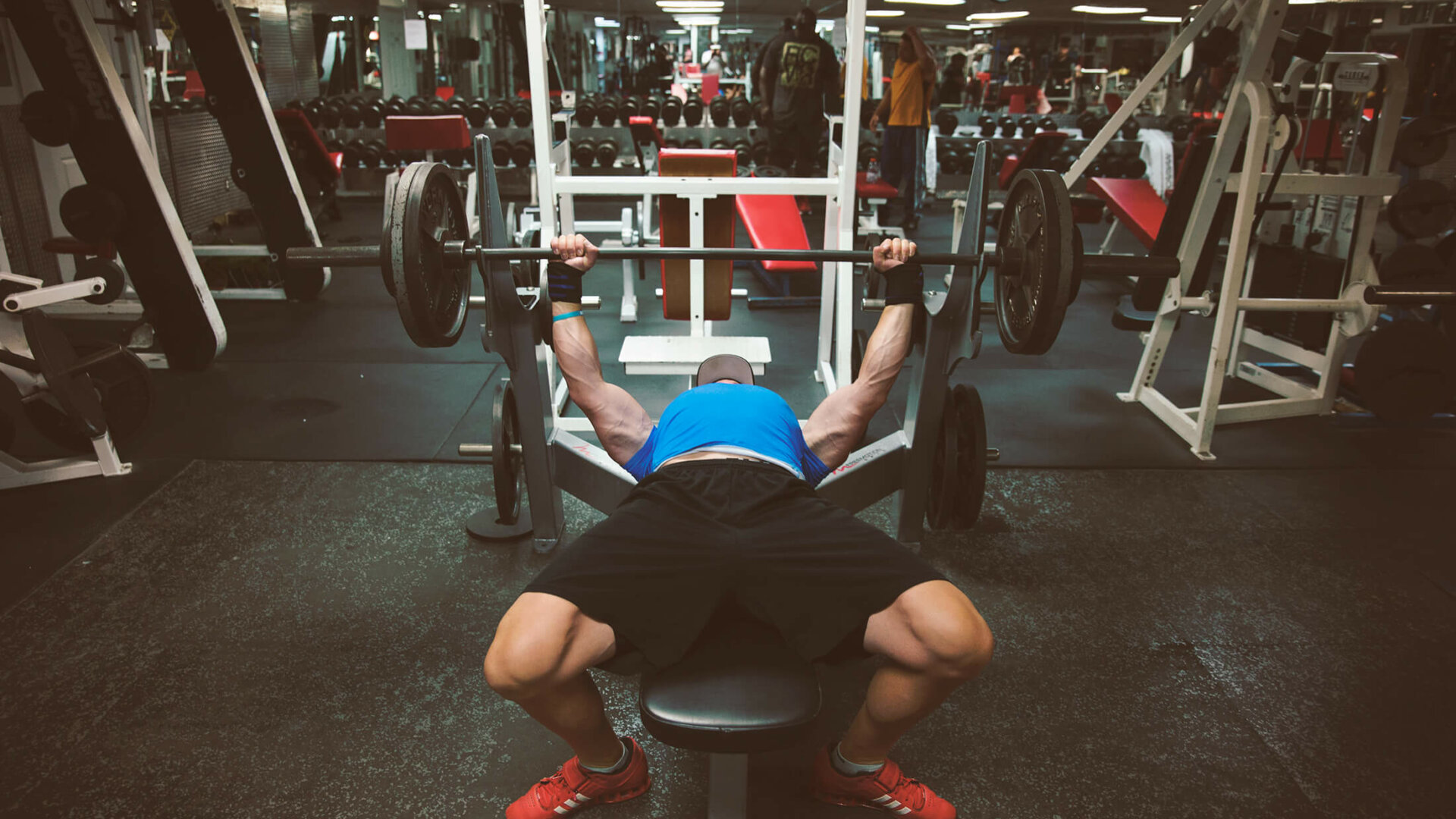I am going to go out on a limb here and assume that you already do enough pulling motions to balance out the benching you do in the form of bench pressing. So if you are doing pull-ups and rows, awesome. If not, start. However, if your bench still isn’t where you want it to be, you have to take a more in-depth look at the motions involved and make the weak areas stronger.
So with that, let’s take a look at the bench press set up, since a lot of your success starts there. You arch the back, bring the shoulders down and back, and press. And it’s a good lift, right? In theory, yes. But this critical area is where many fail. So the primary focus of the following accessory work is to focus on the requisite motions to help you set up for a better bench. Those motions are:
- Scapular depression
- Scapular retraction
- Overall core tightness
With that said, onto the exercises.
Chest Supported Rear Delt Fly
I like this one a lot as a bench accessory. At first, it might not seem like the most intuitive accessory, but let’s take a look at it. You’re abducting the humerus of each arm, and retracting the scapulae. When it comes to performing the bench, what are you doing when you set up? If you answered “retracting the scapulae” you are 100% correct. Scapular retraction is a critical component of the bench press, and you need to develop that. For one thing, locking them in place ensures a more stable set of shoulders. Second, and combined with your arched back, you reduce the range of motion on the lift. If you are a competitive powerlifter, this advantageous. More pounds lifted equals a better total.
As an honorable mention to this exercise, you can still use the bench and try the following: shrugs or rows both performed with a set of dumbbells. The fly involves a lighter load, whereas the other two options can help you practice the scapular retraction with more intensity.
One final note: why the bench? The slight incline will help you practice your scapular depression easier than you can on a flat bench.
Dips
The best way to help your bench when doing these is to have a forward lean. With the lean, you get more chest recruitment due to more horizontal shoulder adduction. Not only that, this mimics my (and Louie Simmons’s) preferred bench press path. The shortest point from A to B is a straight line. Some schools of thought advocate a slight curvilinear bar path with the bench press, sometimes called the C motion. If you opt for Louie’s way, your bench will have the feel of a decline bench, and the line from A to B will be shorter. And the dip can help reinforce that.
Furthermore, practicing dips will help with another critical aspect of the bench. That is, scapular depression while pushing. Other motions, like pull-ups, will depress your scapulae, but only in terms of pulling. The dips force you to depress your scapula by pushing. And scapular depression is important in your bench set up. So if you combine the dips with the previous exercise, these two components will make you get stronger. For more applicability, add some weight to a belt when you decide to practice your dips.
Unilateral Dumbbell Bench Press
Just like you see in the video. You bench press while holding just one dumbbell in your hand. This serves as an anti-rotation exercise for your core. The advantage of that is that it helps you get tighter for your barbell bench. Not only that, it will help you feel where you need to be tight when you perform it. There are many ways to do this, but in order to achieve the max benefits, do it with one hand empty and one hand holding the weight.
To make it even better, apply all the bench press rules you already do. Depress the shoulder blades, retract them, and lock them.
Kettlebells and Mini Bands
I wish I had an arsenal of kettlebells to get a proper video of this, but suffice it to say, it’s awesome. And it’s another gem from Louie Simmons. To perform, you need some kettlebells and some bands. Once you have those, loop the through the kettlebells and hang them from the barbell in lieu of or in addition to your plates.
Once you have them set up, you bench press like you would any other time. However, the kettlebells are going to want to move in various directions. Your goal in this variation is to stop that. In order to do so, you have to stabilize. And by “stabilize” I mean everything. You have no choice but to engage your lats, your triceps, shoulders, and your core. Slow and steady is your aim, as well. If you go to fast, the kettlebells will swing around all over the place.
Conclusion
All of these accessory movements serve two factors of your bench. They will reinforce tension so that you can lift heavy while staying safe, and they reinforce the necessary motions to help you do so. To add them into your training is not that difficult. Use the kettlebells and miniband variant as a solid warm up (since it’s not something you want to go super heavy on anyway) to practice your technique.
As for the dips, you can perform them after your main lifts for the day, or on a separate day of accessory work, depending on what your training split looks like. For the dumbbell unilateral press, I also recommend doing them on a different day since you can go a bit heavier with them, that way you can work on your barbell bench on its own and get the best results that way.
No matter what you do, treat these like any other accessory. Use them to bring up your weak points and hammer proper bench form. And happy benching to you.

